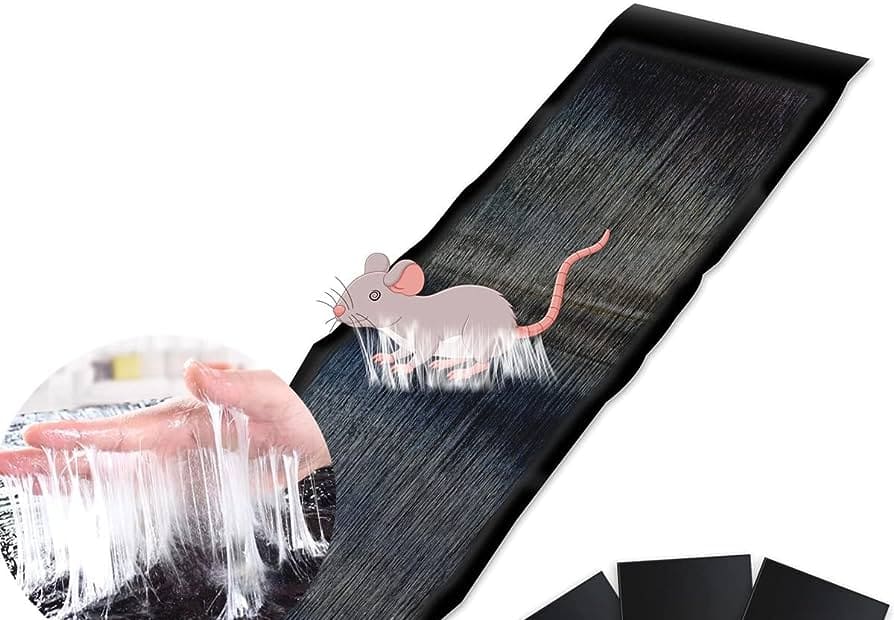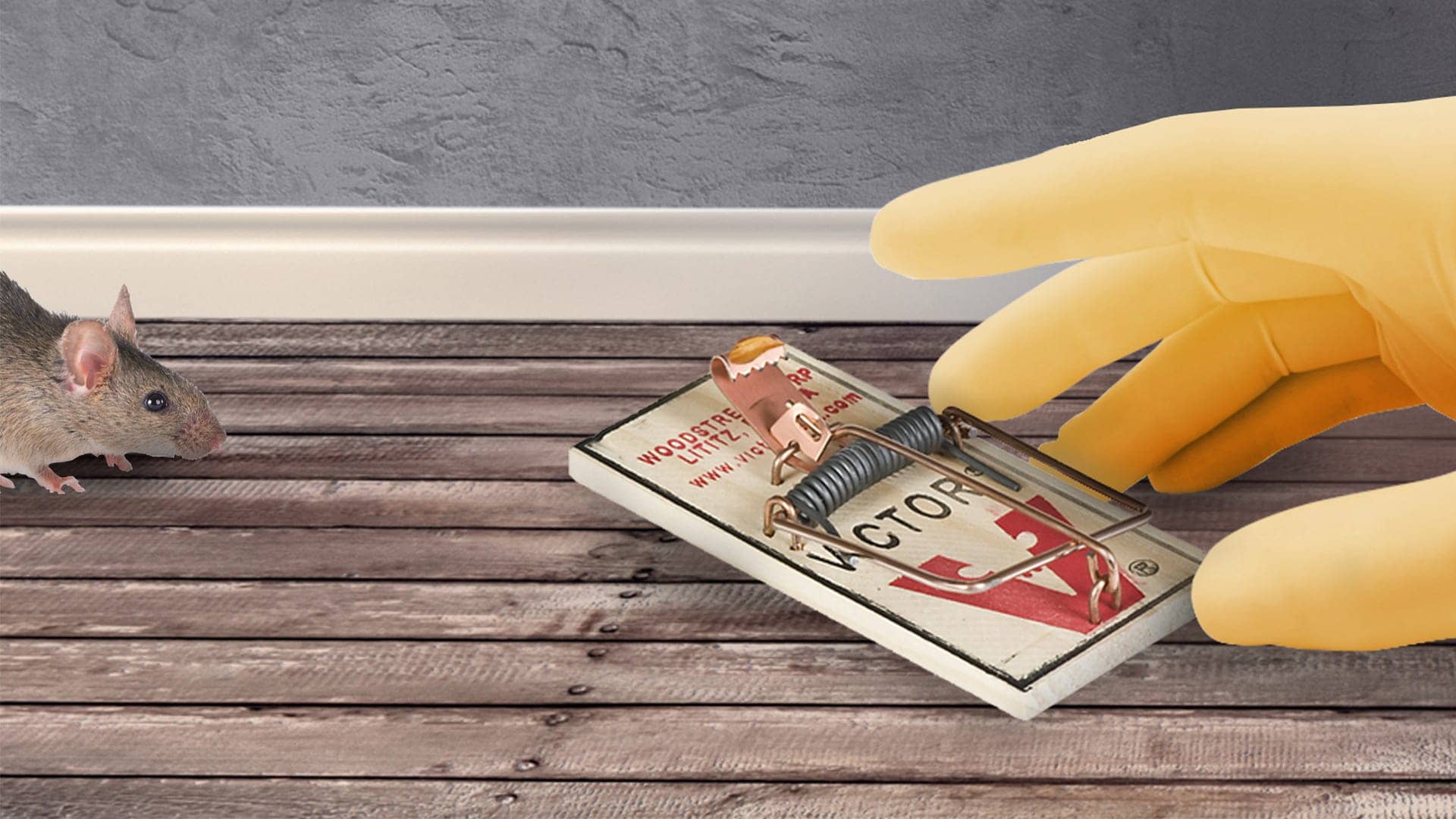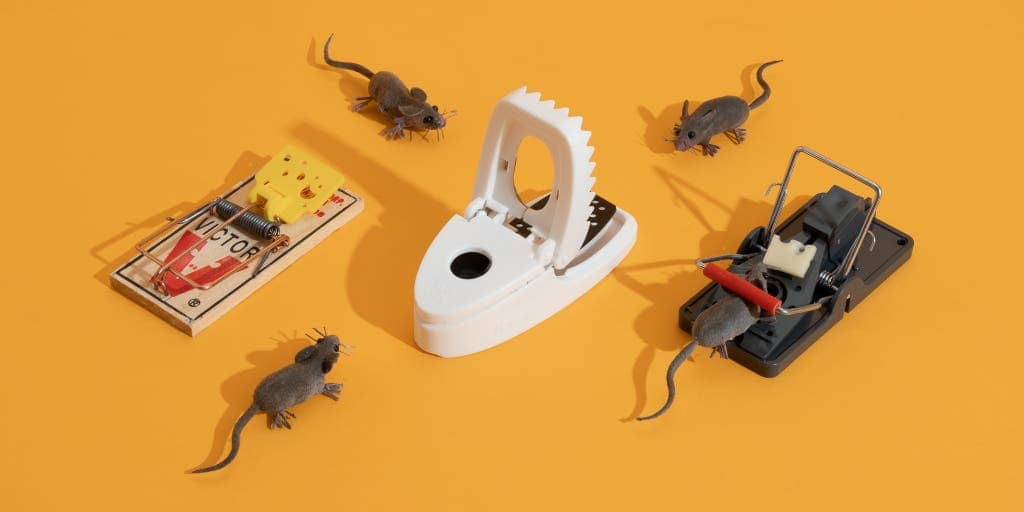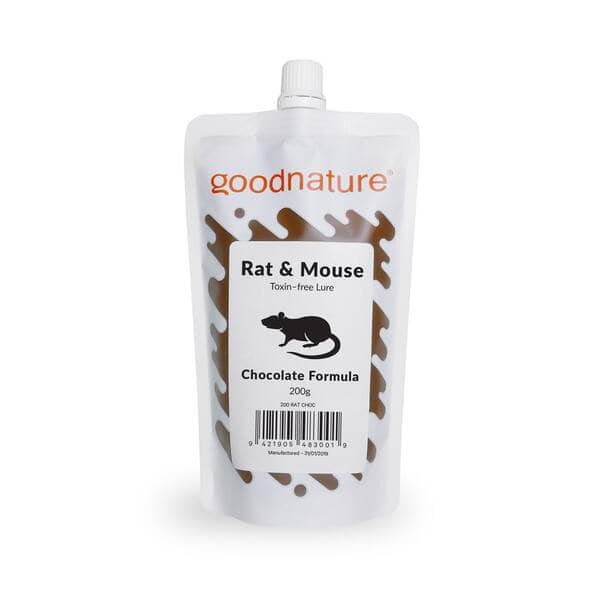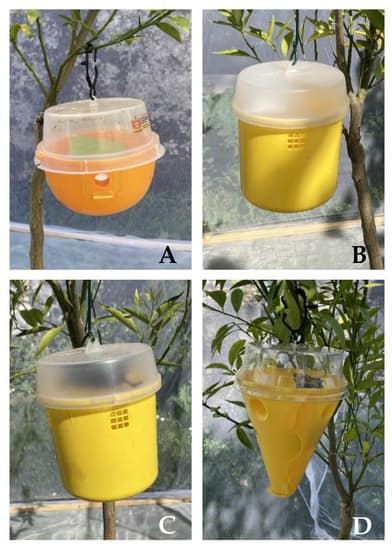Sanitation plays a crucial role in effective mouse trapping by reducing attractants and minimizing the rodent population. A clean and hygienic environment is essential for successful mouse trapping.
Proper sanitation helps to eliminate food sources and nesting areas, making the environment less inviting for mice. By removing crumbs, food waste, and clutter, there are fewer reasons for mice to enter a space and stay there. Good sanitation practices also discourage mice from establishing a population, as they rely on available resources to survive and reproduce.
Therefore, regular cleaning and maintaining cleanliness will support the effectiveness of mouse trapping methods. With a focus on sanitation, mouse trapping efforts can be more efficient and successful in controlling and preventing rodent infestations.
The Importance Of Sanitation In Preventing Mouse Infestation
The cleanliness of your surroundings plays a crucial role in keeping mice away and effectively trapping them. Sanitation is key to preventing mouse infestation by eliminating potential food and shelter sources that attract these pests.
Maintaining proper sanitation is essential in preventing mouse infestation and ensuring effective mouse trapping. Cleanliness serves as the primary defense against mice, deterring them from entering a space. Follow these sanitation practices to keep your environment mouse-free:
Cleanliness As A Primary Defense Against Mice
- Regularly sweep and vacuum floors to remove crumbs, food debris, and any potential food sources that may attract mice.
- Store food in airtight containers, preventing easy access for mice and reducing potential infestation.
- Keep countertops, cabinets, and shelves clean and free from food residue.
- Dispose of garbage in sealed containers, as the smell can attract mice.
- Remove clutter, such as piles of newspapers, cardboard, and unused materials, which can provide hiding places for mice.
- Seal any cracks, gaps, or openings in walls, floors, and doors to prevent mice from entering.
- Keep outdoor areas well-maintained, including trimming vegetation and removing debris that could serve as harborage for mice.
By maintaining proper sanitation practices, you create an environment that is unappealing to mice, reducing the likelihood of infestation and making mouse trapping more effective.
Setting The Stage: Identify Problem Areas
Identify problem areas that undermine effective mouse trapping by focusing on the role of sanitation. Improve trapping success by addressing sanitation issues and creating a mouse-free environment.
At the heart of effective mouse trapping is the ability to identify the problem areas in your surroundings. By pinpointing the key areas where mice are likely to gather, you can better strategize your trapping efforts. Let’s dive into the crucial steps involved in identifying these problem areas.
Identifying Areas Prone To Mouse Activity
To start tackling the mouse problem, it’s important to determine the areas where mice are most active. These are the places where they find shelter, food, and water. Consider the following points:
- Dark and secluded spaces: Mice prefer hidden corners such as basements, attics, crawl spaces, and storage rooms.
- Remote areas: Check for mouse activity in less frequently accessed areas of your home or building, such as unused rooms or abandoned sections.
- Cluttered zones: Mice find clutter appealing as it provides plenty of hiding spots. Inspect areas with piles of boxes, old furniture, or stacks of papers.
- Kitchen and dining areas: One of the primary objectives for mice is to scavenge for food. Pay close attention to the pantry, cabinets, and dining areas.
- Garbage and waste areas: Mice are attracted to garbage bins and compost heaps, as they provide them with easy access to food.
- Utility spaces: Mice often navigate through utility areas, including laundry rooms, heating units, and plumbing access points.
Once you have identified these areas, you can move on to the next step: assessing potential entry points and sources of food and water. Let’s explore this further.
Assessing Potential Entry Points And Sources Of Food And Water
To effectively trap mice, it is crucial to identify their entry points and sources of sustenance. By doing so, you can block their access and limit their resources. Consider these points:
- Small gaps and cracks: Check for openings in walls, floors, and ceilings, as mice can squeeze through incredibly tiny spaces.
- Damaged vents and pipes: Inspect ventilation systems, plumbing openings, and damaged pipes that might serve as entry points for mice.
- Windows and doors: Look for gaps around windows and doors that mice can exploit to enter your premises.
- Cables and wires: Mice often use electrical cables and wiring as pathways, so check for chewed or damaged wires.
- Food storage: Evaluate how you store food in your kitchen. Make sure it is in sealed containers and kept away from easy access.
- Pet and bird food: Mice are attracted to pet and bird food, so ensure that these items are securely stored.
- Water sources: Examine areas with potential water sources, such as leaky pipes, dripping faucets, or standing water.
By systematically analyzing these factors, you can gain valuable insights into mouse behavior and take appropriate measures to trap them effectively. Remember, taking the time to identify problem areas and assess entry points and food sources will greatly improve your chances of success in your mouse trapping efforts.
Implementing A Sanitation Plan
Effective mouse trapping relies heavily on implementing a well-thought-out sanitation plan. Maintaining cleanliness and hygienic conditions plays a vital role in preventing mice infestations and ensuring successful trapping.
Proper Waste Management And Disposal
Maintaining proper waste management and disposal practices is crucial in implementing an effective sanitation plan for mouse trapping. Here are some key points to consider:
- Keep garbage cans tightly sealed to prevent mice from accessing food sources.
- Dispose of trash regularly to avoid attracting rodents.
- Use rodent-proof containers for storing waste and ensure they are properly sealed.
- Separate organic waste from other types of garbage, as mice are particularly drawn to food waste.
- Clean up any spills or debris promptly to eliminate potential food sources for mice.
- Avoid leaving pet food or birdseed out overnight, as these can attract rodents.
Regular Cleaning And Maintenance Practices
Regular cleaning and maintenance play a significant role in preventing mouse infestations and ensuring effective trapping. Consider the following tips:
- Keep your space clean and tidy by eliminating clutter, as mice prefer nesting in undisturbed areas.
- Vacuum and sweep floors regularly, paying special attention to corners, baseboards, and hidden areas.
- Wipe down countertops and surfaces daily to remove any food residue that may attract mice.
- Inspect and clean storage areas, such as pantries and cabinets, to eliminate potential hiding spots.
- Seal any gaps or cracks in walls, floors, and windows to prevent mice from entering your space.
- Install door sweeps and weather stripping to further block potential entry points.
Securing Food Sources And Preventing Access
Preventing mice from accessing food sources is essential in implementing an effective sanitation plan. Follow these guidelines:
- Store food in airtight containers to make it inaccessible to mice.
- Clean up crumbs and spills promptly, as even small traces of food can attract rodents.
- Regularly check and remove expired or damaged food items from your pantry.
- Keep fruits and vegetables in the refrigerator instead of leaving them out on countertops or in open bowls.
- Use mouse-proof containers for storing dry goods like cereal, rice, and pasta.
- Minimize food waste and dispose of it properly to prevent mice from being lured into your space.
By implementing a sanitation plan that includes proper waste management, regular cleaning, and securing food sources, you can significantly enhance the effectiveness of your mouse trapping efforts. These practices help create an environment that is less appealing and accessible to rodents, making it more likely for your trapping efforts to succeed.
Introduction To Mouse Trapping Techniques
Effective mouse trapping techniques rely heavily on maintaining proper sanitation. By eliminating food sources, sealing entry points, and maintaining a clean environment, the likelihood of successful trapping increases significantly.
Sanitation plays a crucial role in effective mouse trapping. To successfully tackle a mouse infestation, it is essential to understand the diverse range of mouse traps available and the factors to consider when choosing the right trap for specific situations.
In this section, we will explore these concepts in detail.
Understanding The Diverse Range Of Mouse Traps Available:
- Snap traps: These traditional, spring-loaded traps are widely used and highly effective. They consist of a baited platform connected to a spring mechanism that snaps shut upon contact with the mouse. Snap traps are versatile and can be used in various settings, including both indoor and outdoor areas.
- Glue traps: These adhesive traps are designed to capture mice by immobilizing them with a strong adhesive. They are particularly useful in areas where the use of snap traps may pose a risk, such as in households with children or pets. However, it’s important to note that glue traps may not always result in immediate death, potentially leading to ethical concerns.
- Electronic traps: These modern traps use electronic sensors to detect a mouse’s presence and deliver a quick electric shock to eliminate it. They are efficient and humane, as they ensure a swift and painless death for the trapped mouse. Electronic traps are particularly suitable for those who prefer a hands-off approach and want a clean and hassle-free disposal process.
- Live traps: As the name suggests, these traps enable the capture of live mice without causing them harm. Live traps are ideal for those who prefer a catch and release approach or wish to relocate the trapped mice to a different location. It’s important to note that proper precautions should be taken to avoid injury when releasing the mice.
Factors To Consider When Choosing The Right Trap For Specific Situations:
- Infestation severity: The level of infestation will dictate the type of trap you should choose. For smaller infestations, snap traps or glue traps may be sufficient, while larger infestations may require the use of electronic or live traps.
- Environmental considerations: Consider whether the area where the trap will be placed is indoors or outdoors, as this will impact the type of trap that is most suitable. Outdoor areas may require traps that are weatherproof and durable.
- Safety concerns: If you have children or pets, it is essential to choose traps that are safe and minimize the risk of accidental injury. In such situations, glue traps or electronic traps may be a better option than snap traps.
- Personal preference: Your personal preferences and comfort level with handling traps should also be taken into account. Some individuals may prefer traps that require minimal contact with the captured mice, while others may prefer traps that allow for catch and release.
By understanding the diverse range of mouse traps available and considering the relevant factors, you can choose the right trap that suits your specific needs and effectively control mouse infestations. A well-planned approach, coupled with proper sanitation practices, will ensure successful mouse trapping and help maintain a clean and pest-free environment.
Enhancing Trap Efficiency With Sanitary Conditions
Enhance trap effectiveness with sanitary conditions for more successful mouse trapping. Proper sanitation plays a crucial role in eliminating mice and preventing infestations.
Effective mouse trapping relies not only on the quality of the traps themselves but also on the surrounding environment. By implementing proper sanitation practices, you can significantly enhance trap efficiency. Maintaining clean and sanitary conditions helps minimize attractants, remove potential hiding spots, and eliminate nesting materials.
Let’s explore these strategies further:
Minimizing Attractants Through Sanitation:
- Keep food tightly sealed: Store food items in airtight containers to prevent mice from detecting and accessing them.
- Clean up spills promptly: Wipe up any food or liquid spills immediately to avoid attracting mice with potential food sources.
- Dispose of garbage properly: Seal all trash cans and ensure they are kept clean and emptied regularly to prevent them from becoming a food source for mice.
- Clean pet food dishes: Avoid leaving pet food out overnight and clean their dishes after each meal to eliminate any food remnants that may attract mice.
- Avoid clutter: Keep your living spaces organized and free from clutter as mice can use these areas as hiding spots and nesting areas.
Removing Potential Hiding Spots And Nesting Materials:
- Seal cracks and crevices: Inspect your home for any gaps or openings where mice can enter, and seal them with caulk or steel wool.
- Reduce clutter: Minimize objects or debris that provide potential hiding spots for mice, such as piles of old newspapers, cardboard boxes, or unused furniture.
- Store items properly: Keep stored items off the floor and store them in plastic containers with secure lids to prevent mice from using them for nesting materials.
- Trim vegetation: Ensure that tree branches, bushes, and shrubs are trimmed away from the exterior of your home, as overgrown vegetation can provide hiding spots for mice.
By implementing these strategies and maintaining sanitary conditions, you can enhance the efficiency of your mouse traps. Remember, a clean and clutter-free environment makes it less attractive for mice to invade and increases the likelihood of successfully trapping them.
The Role Of Baiting And Luring Techniques
Sanitation plays a crucial role in effective mouse trapping, as it eliminates food sources and entices mice to take the bait. Proper cleanup and maintenance of the surroundings significantly improve the success rate of trapping these pests.
Baiting and luring techniques play a crucial role in effective mouse trapping. By strategically using food baits and scent-based lures, you can entice mice into traps and enhance the success of your trapping efforts. In this section, we will explore the importance of using food baits effectively and employing scent-based lures to attract mice into traps.
Using Food Baits Effectively:
- Peanut butter: Apply a small amount of peanut butter to the mouse trap trigger. Its strong smell and sticky texture make it an irresistible bait for mice.
- Cheese: Use small pieces of cheese as bait, ensuring that it is securely attached to the mouse trap. The distinct aroma of cheese can attract mice from a distance.
- Chocolate: Melt a piece of chocolate and spread it on the trap trigger. The sweet scent of chocolate can effectively lure mice into the trap.
- Nuts and seeds: Place a mixture of nuts and seeds as bait on the trap. The combination of crunchy textures and nutty aromas can entice mice.
By using a variety of food baits, you increase the likelihood of attracting mice to the trap. Experiment with different bait options to determine which one works best in your specific situation.
Employing Scent-Based Lures To Entice Mice Into Traps:
- Mint leaves: Crush some fresh mint leaves and place them near the trap. Mice are repelled by the strong smell of mint and may be lured into the trap to escape it.
- Vanilla extract: Dab a cotton ball with vanilla extract and place it near the trap. The sweet and inviting scent of vanilla can attract mice towards the trap.
- Catnip: Sprinkle some catnip near the trap. Many mice are drawn to the scent of catnip and may venture closer to investigate, increasing the chances of trapping them.
Scent-based lures can be effective in enticing mice into traps, especially if you strategically position them around the trap area. Remember to refresh the lures periodically to maintain their potency.
Baiting and luring techniques play a vital role in the success of mouse trapping. By using food baits effectively and employing scent-based lures, you can create an enticing environment that mice cannot resist. Experimenting with different bait and lure options can help you optimize your trapping efforts and increase your chances of catching mice effectively.
Monitoring And Maintenance For Long-Term Success
Maintaining proper sanitation is crucial for effective mouse trapping. Regular monitoring and maintenance ensure long-term success in eliminating these pesky pests.
Sanitation: The Key To Effective Mouse Trapping
Mice are relentless creatures, constantly seeking shelter, food, and water in our homes. In order to achieve long-term success in mouse trapping, it is imperative to focus on proper monitoring and maintenance. Regular inspections and trap maintenance play a crucial role in eradicating and preventing further mouse infestations.
Additionally, identifying signs of mouse activity and adjusting strategies accordingly ensures that your trapping efforts are targeted and effective.
Regular Inspections And Trap Maintenance:
- Perform routine inspections of both the interior and exterior of your property to detect mouse activity early on.
- Check for any cracks, holes, or gaps in the walls, floors, or foundation that mice could use as entry points.
- Ensure all windows and doors are properly sealed to prevent easy access for mice.
- Keep your property clean and clutter-free as mice are attracted to areas littered with food, debris, or nesting materials.
- Examine traps regularly, replacing any damaged or malfunctioning units promptly.
- Clean and sanitize traps after each catch to maintain their effectiveness.
Identifying Signs Of Mouse Activity:
- Look for droppings, gnaw marks, or shredded paper in corners, cabinets, or hidden areas.
- Keep an eye out for tiny footprints or tracks on dusty surfaces or windowsills.
- Observe any unusual behavior in pets, such as excessive sniffing or scratching near walls or furniture.
- Listen for squeaking or scratching sounds within walls or ceilings.
- Use a flashlight to inspect dark areas like basements, attics, or crawl spaces.
Adjusting strategies:
- Increase the number of traps in areas where mouse activity is concentrated.
- Experiment with different types of traps, such as snap traps, glue traps, or electronic traps, to determine what works best for your situation.
- Alter bait options, including peanut butter, cheese, or chocolate, to attract the mice.
- Modify trap placement by positioning them along walls or near mouse entry points.
- Monitor the effectiveness of your trapping methods and make adjustments as necessary.
By implementing these monitoring and maintenance techniques, you can optimize the effectiveness of your mouse trapping efforts. Regular inspections, trap maintenance, and adaptive strategies will ensure long-term success in keeping your home or business free from unwanted rodent guests. Remember, prevention is the key, so stay vigilant and take action at the first sign of mouse activity.
Additional Sanitary Measures To Complement Mouse Trapping
Achieve effective mouse trapping by implementing additional sanitary measures. Enhancing cleanliness and hygiene alongside mouse trapping ensures a more comprehensive approach to rodent control.
Sanitation plays a crucial role in ensuring effective mouse trapping. While traps are an essential component of any rodent control strategy, implementing additional sanitary measures can complement the trapping process and increase its success rate. By sealing entry points and closing off access areas, as well as implementing disinfection and sanitization practices, you can create an environment that is less attractive and hospitable to mice.
Let’s delve deeper into these additional measures:
Sealing Entry Points And Closing Off Access Areas:
- Inspect and identify all possible entry points where mice can gain access to your property.
- Use caulk or weather stripping to seal gaps and cracks around windows, doors, and utility openings.
- Repair any damaged screens on windows and vents.
- Ensure that all cracks in the foundation and walls are properly sealed.
- Install door sweeps on exterior doors to prevent mice from entering under the gaps.
- Close off access areas such as crawl spaces, attics, and basements by installing barriers or mesh wire.
These measures will significantly reduce the entry points and access areas for mice, making it more difficult for them to invade your property.
Disinfection And Sanitization Practices To Eliminate Mouse-Borne Pathogens:
- Clean and disinfect areas that are prone to mouse activity, including storage areas, kitchens, and garbage disposal areas.
- Use a disinfectant specifically formulated to combat rodent-borne pathogens.
- Regularly clean and sanitize food preparation surfaces, utensils, and storage containers.
- Dispose of food waste properly in sealed containers to prevent attracting mice.
- Keep garbage bins tightly covered to avoid providing a food source for rodents.
- Clean up any spills or crumbs promptly to eliminate potential food sources for mice.
By implementing these disinfection and sanitization practices, you not only eliminate mouse attractants but also reduce the risk of mouse-borne diseases. This is particularly important as mice can transmit diseases through their urine, droppings, and bites.
While mouse trapping is an effective means of rodent control, incorporating additional sanitary measures can greatly enhance its success. By sealing entry points and closing off access areas, you create a barrier that makes it difficult for mice to enter your property.
Additionally, implementing disinfection and sanitization practices help eliminate potential food sources and reduce the risk of mouse-borne diseases. Combine these measures with proper trapping methods for a comprehensive approach to mouse control.
Conclusion: The Synergy Of Sanitation And Mouse Trapping
Sanitation plays a crucial role in achieving effective mouse trapping. By eliminating food and shelter sources, proper sanitation creates an inhospitable environment that discourages rodents while enhancing the success of trapping efforts.
The significant impact of proactive sanitation practices in conjunction with effective mouse trapping:
- Maintaining proper sanitation is crucial when it comes to effectively trapping mice. By combining proactive sanitation practices with effective mouse trapping methods, you can create an environment that discourages mouse activity and ensures long-term success.
- Here are some key points to consider when it comes to the synergy of sanitation and mouse trapping:
- Eliminating food sources: A clean environment with no easily accessible food will discourage mice from staying or entering your property. Ensure that all food is stored in sealed containers, and regularly clean up any spills or crumbs.
- Removing clutter and hiding spots: Mice thrive in cluttered areas with plenty of hiding spots. Declutter your space and organize storage areas to make it less attractive for mice to settle in. Seal off any potential entry points like small gaps or cracks.
- Maintaining cleanliness: Regular cleaning of your property is essential to prevent mice infestations. Sweep, mop, and vacuum regularly to remove any potential mouse attractants and nesting materials.
- Proper waste management: Dispose of trash promptly and properly in sealed containers. Mice are attracted to waste, so it’s crucial to keep your waste management system in check.
- Essential maintenance: Conduct regular inspections to identify and fix any potential entry points for mice. Seal cracks, repair damaged screens, and ensure proper ventilation to deter mice from entering your property.
- Consistent trapping: Effective mouse trapping methods, such as using snap traps or electronic traps, should be employed alongside proactive sanitation practices. Place traps in strategic locations along common mouse pathways, focusing on areas where signs of mouse activity are visible.
- Monitoring and follow-up: Continuously monitor traps for any signs of success or activity. If trapping proves ineffective, reassess your sanitation practices and make necessary adjustments to create an environment that is less favorable for mice.
By recognizing the significant impact of proactive sanitation practices in conjunction with effective mouse trapping, you can take the necessary steps to prevent, control, and eliminate mouse infestations. Remember, a clean and well-maintained environment is the first line of defense against unwanted rodent guests.
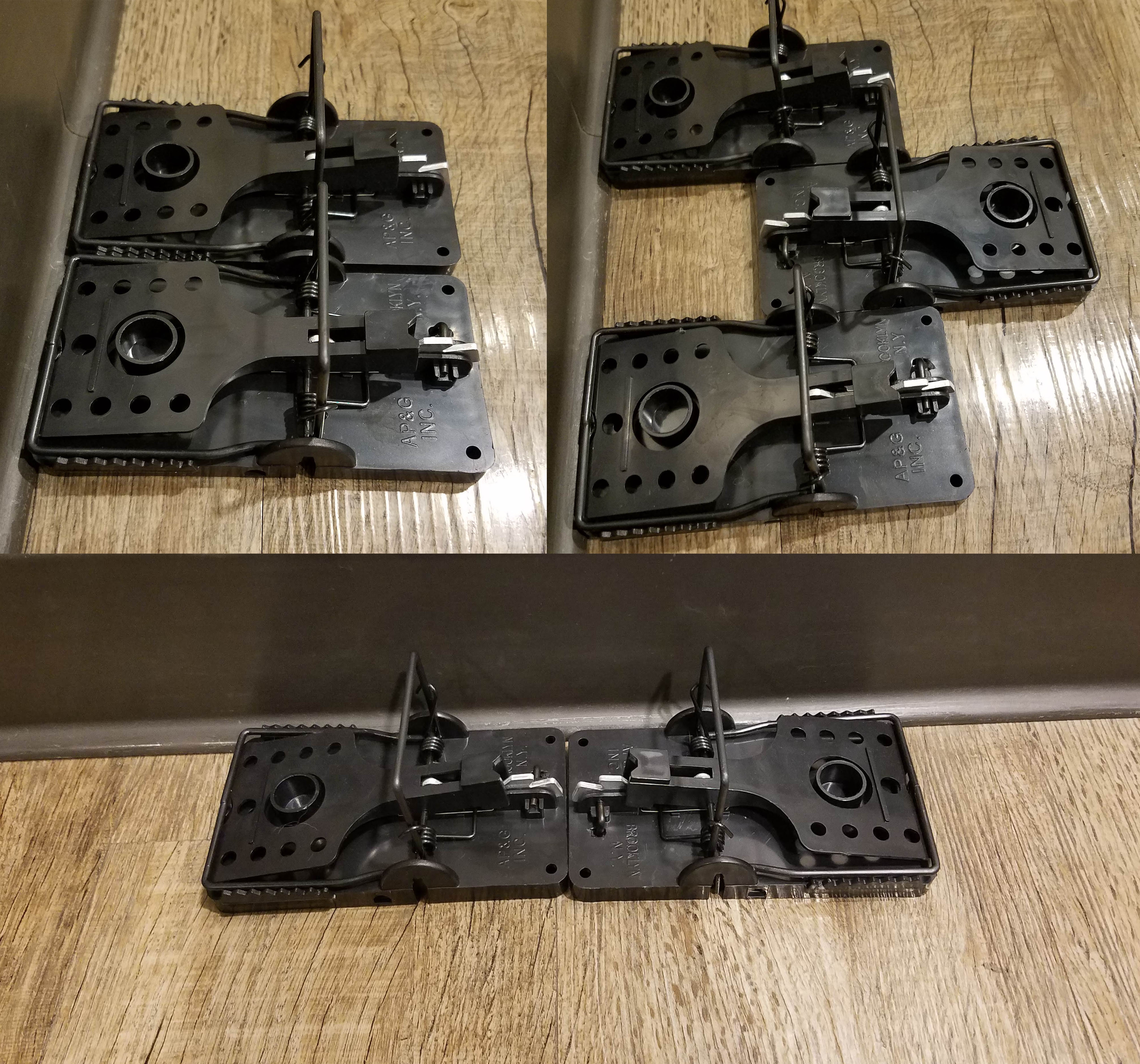
Credit: ucanr.edu
Frequently Asked Questions On The Role Of Sanitation In Effective Mouse Trapping
How Do You Sanitize Mouse Traps?
To sanitize mouse traps, clean them with hot water, soap, and a brush, then disinfect them with a mixture of bleach and water.
What Is The Most Effective Way To Use A Mouse Trap?
To effectively use a mouse trap, position it along walls or in areas mouse activity is present.
Do Mouse Traps Need To Be Cleaned?
Yes, mouse traps should be cleaned to maintain hygiene and effectiveness.
Does Cleaning Help With Mice?
Yes, cleaning can help with mice by removing food sources and eliminating hiding places.
Conclusion
Maintaining proper sanitation is crucial for effective mouse trapping. By eliminating potential food sources and hiding spots, you can significantly reduce the chances of mice infestation. Regularly cleaning and disinfecting areas where mice are commonly found, such as kitchens and storage rooms, will deter them from entering your premises.
Additionally, sealing any gaps or cracks in walls, floors, and windows will prevent mice from gaining access. It is also important to properly dispose of waste and store food in airtight containers to make it less attractive to mice. Using mouse traps and baits in conjunction with good sanitation practices will boost your chances of successfully trapping and eliminating mice from your home or business.
Taking a proactive approach to sanitation not only helps with mouse control but also contributes to a healthier and safer environment for you and your family. So, start implementing these sanitation measures today and enjoy a mouse-free space.
